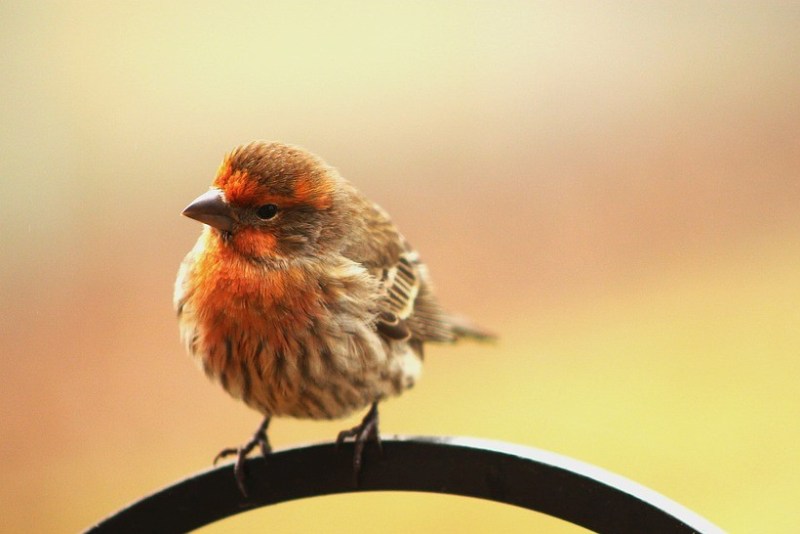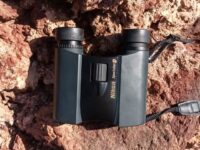Bird watching is a great hobby. You spend a lot of time out in nature and can find peace and relaxation in it. Also, it has no seasonal or regional restriction, birds can be observed all year round everywhere, be it in your own garden, in the forest, in the mountains or on vacation, everywhere there are birds. What’s even better if you’re a biologist and watch birds professionally.
Bird watching – the basic requirements
One of the most important virtues of bird watching is patience. Bird watching, just as wildlife watching is not something for impatient people.
It can take a long time for a bird to see. Also, many birds are small and move very fast and hectic, they rarely sit still for more than a few moments. Thus, birdwatchers often have only brief moments of observation to recognize features and to determine the type of bird. To watch wild birds you have to make yourself comfortable and lie in wait, and wait for good observation opportunities.
Bird Watching – What equipment do I need?
As already mentioned the most important thing is patience. In addition, a few more items can be useful to watch birds and have you prepared for any other eventualities in nature.
Good binoculars
Binoculars are one of the most important pieces of equipment of a birder. Binoculars enlarge the field of view and birds can be observed from a distance. Watching the birds from a distance is important so that the animals feel as undisturbed as possible and behave naturally. Also, it is impossible in many cases without binoculars to accurately recognize the species-specific characteristics of a bird. The perfect binoculars for bird watching should be handy and easy to use and have high color fidelity and contrast-rich image quality.
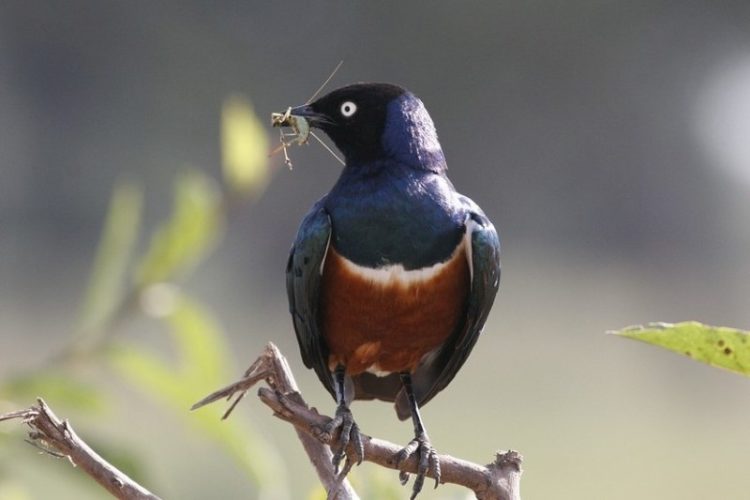
Which binoculars for bird watching?
A good pair of binoculars should provide bright sharp images in true colors, and being waterproof and fog proof is always a very good feature for binoculars that are used in nature.
If you need to wear your glasses when using the binoculars then you must make sure that the instrument has a long eye relief. 16 to 20 mm eye relief is the least that a good pair of binoculars for eyeglass wearers must-have.
The price is often crucial for the choice of binoculars. The high-end models from Swarovski, Leica, or Zeiss can easily cost over $ 2,000. If you spend so much money on a pair of binoculars then you have really bought the best, high-end binoculars that last a lifetime. No need to worry that you might soon have to buy something better. This is hardly possible, binoculars are not cell phones, physics sets limits.
Not many people want to spend that much money on high-end binoculars. Fortunately, there are many premium binocular models from Leupold, Vortex, Steiner Nikon, Minox, or Maven which have an excellent optical performance.
Of course, there are also many very affordable binoculars that are very suitable for beginners or occasional users. Very popular makers are Bushnell, Wingspan Optics, Celestron, and many other makers.
Which binoculars are best for you, obviously depends on your personal preferences. Binoculars magnifications of 8x or 10x, often with a 42mm front lens diameter, are the most popular. Instruments of this size are great all-around binoculars that are easy to handle.
Binoculars with stronger magnifications are not so easy to keep calm and you get tired because of the higher weight of the binoculars. High magnification instruments should have an integrated image stabilizer or you have to use a tripod
Small binoculars are cheaper to buy and 8×30 or 10×30 models can be a good alternative. There are even good small compact binoculars with a front lens diameter of just 20mm or 25mm. But remember, the smaller the collecting lens, the less light the binoculars can collect and the images will not be as bright. In bright daylight, this is not noticeable, but at dusk or dawn, larger lenses are better.
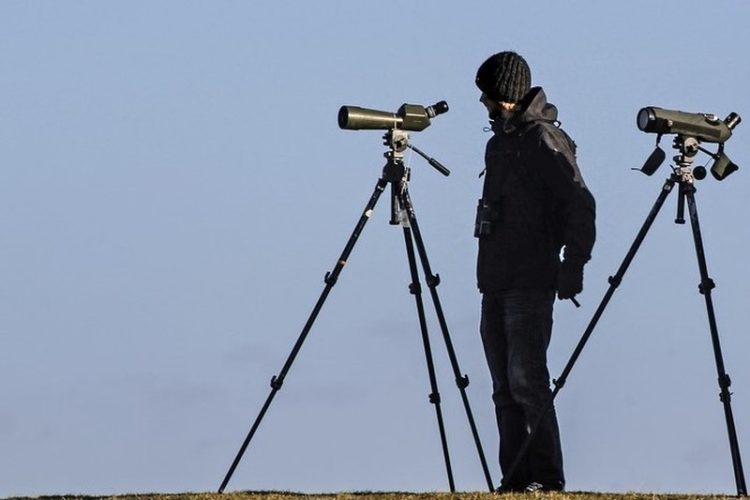
Spotting Scope
A spotting scope is a telescope that has been modified for earth observation, spotting scopes produce upright, right-angled images like binoculars. They are used as an alternative to binoculars when greater magnification is needed than binoculars can provide. Spotting scopes are used to observe birds and wildlife, as well as to hunt (rifle scope) and daytime observation of other distant objects. When observing distant objects, spotting scopes are superior to binoculars. It is usually necessary to fix a spotting scope with a tripod.
Digiscoping
If a spotting scope is used together with a digital camera for photographing, one speaks of the so-called Digiscoping. This fairly new hobby is becoming more and more popular among bird and wildlife watchers.
Fascinating impressions can be captured, depending on the power of the spotting scope used. Focal lengths of over 1000 millimeters are easily feasible and compared to regular camera lenses, the spotting scopes are many times cheaper.
Many digiscope enthusiasts use high-quality digital SLR cameras. Digiscoping beginners also use compact cameras or the latest trend is smartphone digiscoping. Modern smartphones have high-quality cameras and the phone is always with you anyway. The market offers smartphone adapters for many models.
Tripod
Binoculars with 8 or 10 times magnification can be kept quite still for a while, but even longer observations are hardly possible without a tripod. At higher magnifications, whether binoculars or a spotting scope, a tripod is definitely needed, it would be too tiring and no fun to keep heavy optics calm in the long run.
Field Guide
To identify birds you need a good guide. Good identification books are have detailed descriptions of the species and detailed drawings. In addition to a detailed description of the size, shape and special plumage characteristics, good guide books also contain information on plumage differences between young and old birds as well as between the different sexes.
Besides large online identification databases that help can be used to tell what bird is that, Birding Apps are another option to help to identify birds. And not only identify, they even help you to learn birdsongs and report bird sightings.
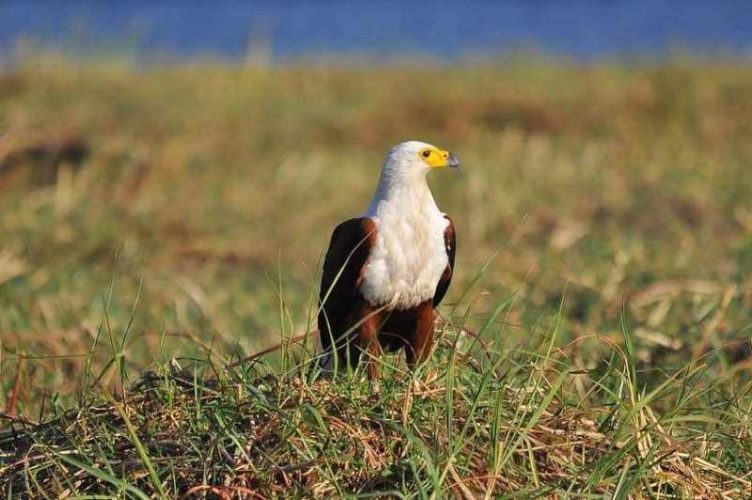
Bring a little notebook
Pen and notebook may help to write down details of sightings or to make sketches of birds. Use your cell phone’s voice recorder to record observation details or you can even record bird sounds.
Other gear
As if that was not enough, there are other items of equipment that can be useful and useful in bird watching. A small folding stool can provide a comfortable seating position, a tarpaulin or a bird hide can protect you from wind and weather and keep you out of sight from the birds.
Bring a backpack
Carry a small backpack, bring a light raincoat, some food, water, fire-making utensils, a torch, a mirror, a good knife, some rope, and a cell phone. All these are important when wandering far out into the wilderness, and especially a cell phone is important to be able to make an emergency call if something unforeseen should happen.
Appropriate Clothing
The right outdoor wear is also very important. To feel at ease and comfortable, the clothing should protect against the weather and the cold. If you go far have enough supplement garments in your pack so you have adequate clothing even if the weather changes.
Bring a hut, either to protect from the sun or from cold. Proper footwear is essential too. You might end up off-trail, find yourself in wet and muddy undergrowth or in another difficult terrain. Be prepared.
Follow the Rules
The well-being of birds and nature has always the highest priority. It is important to observe the relevant regulations and rules in nature reserves. But even outside of protected areas, follow the rules to protect the environment and its inhabitants. Observe breeding and nesting time and don’t disturb wildlife.

How To Identify Birds
Important features to determine bird species are the color of the plumage, the body size, the body shape, the birdsong, characteristic behavior, and the habitat in which one observed the bird.
- Size – compare the size with known species
- Coloring – striking characteristic colors
- Pattern – Special spots stripes in plumage
- Body shape – short, long stretched, compact
- The coloration of beak, eyes, legs
- Movement – in flight or on the ground
- Bird song – Calls and song is species-specific
- Habitat – Environment typical of the species
- Where and When – time season of the year, time of day, weather
- Comparison: Compare the observed species with other species you know
In addition to identifying the species of birds by their optical characteristics, you can also identify birds quite well by their singing. To do this of course you have to learn and distinguish many birdsongs. Nowadays, Apps very useful to ID birdsong.
From Bird Watching To Bird Conservation
Birdwatchers can also contribute a lot to bird protection. By observing regularly, the birdwatcher has an understanding of how many birds are normally present at a regular observation site. Over the years one can tell whether the bird population increases or decreases.
So when one sees firsthand, how bird populations decline and that certain species of birds have become very rare, then you might also want to contribute something to their protection.
If you find that birdwatching is fun and fun, maybe you want to join a club or a bird conservation association (American Bird Conservancy, Birdlife International). There is always something you can do to help our feathered friends. In this way, you can connect with like-minded people, share experiences, and make new friendships.
